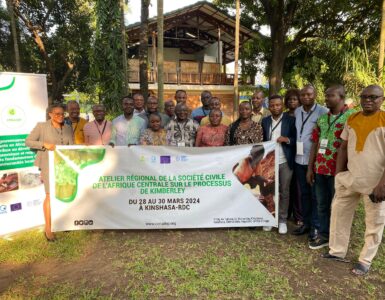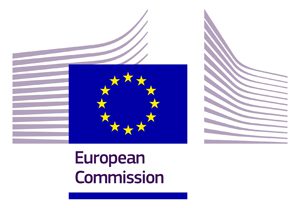In May 2024, the KP CSC and De Beers organized a roundtable at the OECD Forum on Responsible Mineral Supply Chains. Moderated by Joanne Lebert, Director of IMPACT, the discussion brought together a good diversity of actors from governments (diamond producing, trading, and consumption countries), industry (mining companies, traders, jewellery companies, industry associations, and technology providers), and civil society (from Zimbabwe, Tanzania, DRCongo, Ivory Coast, Cameroon, Belgium, and Canada).
During keynote remarks of the KP CSC, Michel Yoboué highlighted the various challenges facing the Kimberley Process and the diamond trade:
In 2003, diamonds were the first mineral to be covered by a certification scheme developed by the Kimberley Process. While a pioneering initiative 21 years ago, the Kimberley Process has proved resistant to change. It is today caught up by realities and responsible sourcing practices for other minerals.
Kimberley Process certificates are used as a guarantee of ethical or responsible sourcing, but in practice, many important challenges are not addressed:
- The KP’s ‘conflict diamond’ definition only focuses on eliminating rough diamonds used by rebels to finance their military activities against legitimate governments. Today only diamonds produced in certain areas of the Central African Republic (CAR) are considered to be conflict diamonds.
- Yet, diamonds continue to be tainted by violence and human rights abuses by public and private security companies but also due to inter-state wars.
- The diamond trade is characterized by a lack of transparency that makes it vulnerable to smuggling, corruption, money laundering, and the financing of terrorism.
- For diamond-affect communities, child and forced labour, poor working conditions for miners, and profound environmental impacts are painful realities.
Despite shared challenges with other minerals, discussions on diamond governance have remained fairly isolated from broader dialogues on minerals-related due diligence, as diamonds are often considered to have their platform with the Kimberley Process. In light of the considerable challenges facing the diamond sector and the serious flows of the KP, there is an urgent need to look at other ways of advancing responsible diamond governance.
Participants in the roundtable shared updates, reflections, questions, and concerns on a number of key topics:
- Provenance, traceability, certification, and monitoring: KP certificates mislead consumers by offering ethical assurances that are not supported by the scope and quality of controls. Efforts by the G7 to ban Russian diamonds have spurred advancements in traceability practices and technology, exemplified by initiatives such as Tracr. Recognizing the shortcomings of the KP, it’s imperative to acknowledge that no system is flawless. Therefore, initiatives aimed at enhancing traceability and origin documentation must prioritize transparency regarding their limitations.
- Risk mitigation: The KP’s reliance on embargoes avoids addressing root causes of conflict-related risks. Conversely, the OECD due diligence framework emphasizes progressive risk mitigation. Initiatives like De Beers’ GemFair project in Sierra Leone and OrigemA by DDI@Resolve and the Antwerp World Diamond Centre (AWDC) in DRCongo offer interesting examples of risk management aligned with OECD standards for responsibly sourcing artisanally mined diamonds. The diamond industry can improve supply chain due diligence by learning from these initiatives.
- Transparency: The Kimberley Process is stalled by strict confidentiality rules, turning consensus into veto power with no accountability. This is exacerbated by KP documents and reports being not or difficult to access. The diamond industry needs to draw lessons from the OECD, where transparency and reporting are central principles. De Beers and the Responsible Jewellery Council showcased steps towards that goal.
- Artisanal and small-scale mining: In 2012 the KP adopted the Washington Declaration on Integrating the Development of ASM with KP Implementation, a promising roadmap that regrettably remains unimplemented. Apart from some pilot projects, the diamond sector has made minimal progress in advancing ASM over the past two decades. In contrast, other minerals have witnessed more concerted efforts and initiatives, albeit with varying degrees of success. It’s evident that there’s a pressing need for cross-mineral lessons to be learned, aiming for scalable results that equally benefit communities and consumers, while equitably distributing costs and requirements throughout the supply chain.

Over the past 15 years, numerous discussions have centered around responsible mineral sourcing, particularly for gold and 3T minerals (tin, tantalum, and tungsten). Billions have been invested in pilot projects and responsible sourcing schemes. The outcomes have been varied. Disregarding the lessons learned about effective strategies and pitfalls to avoid would be unwise, for the diamond trade as well as for the emerging discussions around responsible sourcing of critical minerals. It is imperative to dismantle barriers between platforms and sectors.
A concerted effort is needed to engage in targeted dialogue regarding the necessary steps to mitigate the adverse impacts of mining but also strive to leverage its potential for promoting peace and development. Being more open, humble, and transparent about the expectations from responsible sourcing schemes is crucial. Neither initiatives like the Kimberley Process nor industry self-regulation alone can guarantee peace and sustainable development. They must be integrated into a comprehensive strategy of efforts and initiatives to achieve broader positive impacts.










